Think of Lancia, and your mind wanders off for a bit. To most people, that brand name means nothing, or perhaps if you live in Italy, it might mean that they make dull, uninspiring economy cars. To enthusiasts however, just those six letters have a provenance that remains unmatched, and its fall from grace is ever more saddening to see. As one of the oldest carmakers around, Lancia was one of those legendary icons that people aspired to, and yearned to have one.
They're known for combining charismatic design, with plenty of engineering firsts. Breakthroughs from their use of a wind-tunnel in designing a car, fitting electrical equipment as standard, or stuffing a Ferrari V8 into a family saloon. These are the sort of ingenious, and wacky thinking that made owning a Lancia both a peculiar, but worthwhile experience.
A History Lesson.
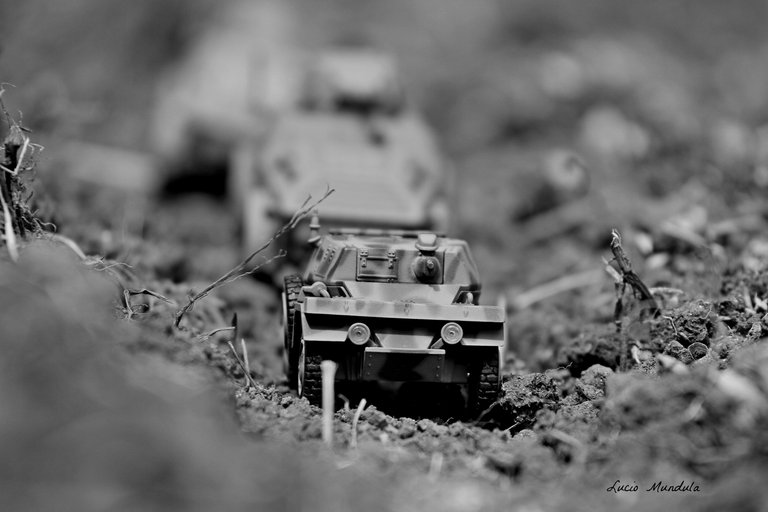
Credits to: lumun2012, Ethiopia 1944 - Flickr | Didn't know Lancia made tanks, did you?
Then, there's the heroism that all folk associate Lancias with. The wealthy can have their Ferraris, but the rest of us can keep up just fine, if not overtake with our Lancia. Their involvement in motorsports - especially rallying - was unparalleled. Ain't no car can tackle dirt, mud, sand, snow, dust, puddles, grass or any other surface like a Lancia. Despite having been absent from the world of rallying for nearly 27 years now, they still have, by far the number of Constructors titles - unbeaten with 15 wins.
Yet, that's all we ever see and know about. It might just be myself, but I think most others can agree that we only ever think about Stratos and Deltas when those six letters come up. With all their automotive prowess, one might wonder as to what might happen if they made other sorts of vehicles. Indeed, they did dabble into more than just cars - although not as celebrated - from lorries, busses, bicycle (singular), and speedboat (also, singular).



Credits to: 1, 2, and 3 | Just a show of what Lancia normally means to me.
But that's not what gave me the odd inspirations to base this post from. No, for that we need to dig deep into the annals of warfare. My peculiar fascinations began with a video that I had watched earlier, produced and narrated wonderfully as a short documentary on Italy's forgotten war with Japan (linked below). When the Second World War broke out, naturally the Kingdom of Italy was obliged to draw swords alongside their partners in the Tripartite Pact - Nazi Germany, and the Empire of Japan.
It was also partly inspired by Benito Mussolini's grandiose visions of rebuilding the old Roman Empire. While it presented some heroics, the military unpreparedness and reluctance of Italy lead to a tactical disaster, leading to retreats from the Horn of Africa, to the Greek Isles. The south of the Italian Peninsula fell rapidly to the Allies in 1943, now freeing them from Fascist rulership. Now, Italy is bitterly divided.
An Armistice was signed between King Victor Emmanuel III's new government, forming an allied state within central and southern Italy. In the northern foothills however, a new puppet state was formed by Nazi Germany, hoping to create a defensive buffer to protect their southern borders. That split between north and south created problems, and prompted questions of loyalty elsewhere. Italy may have already lost their possessions in Africa, but there remained small plots of land in Asia.
They still had thousands of soldiers, tonnes of equipment, and the Royal Navy - each now beginning to wonder who's side should they take, Axis or Allied. This was troubling in Italy's sovereign territories in China, which was surrounded by millions of square miles of Imperial Japanese territory. To oblige by the Armistice, those Italian garrisons would effectively be at war with their former-Axis buddy, Japan, and their millions of zealous troops in Asia.
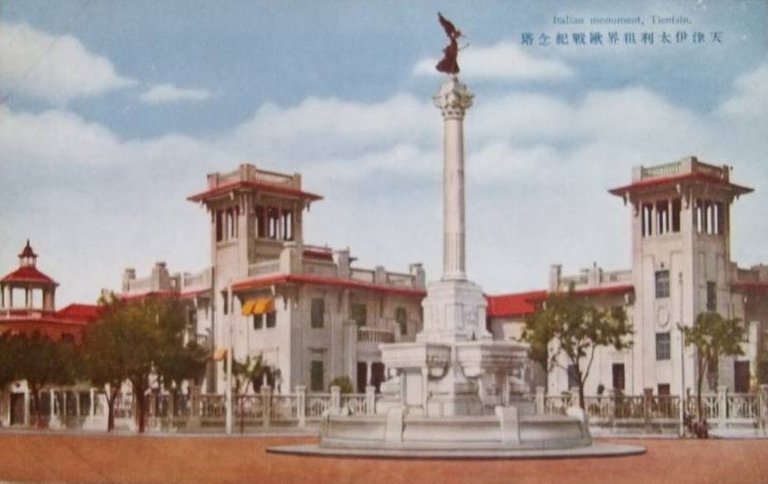
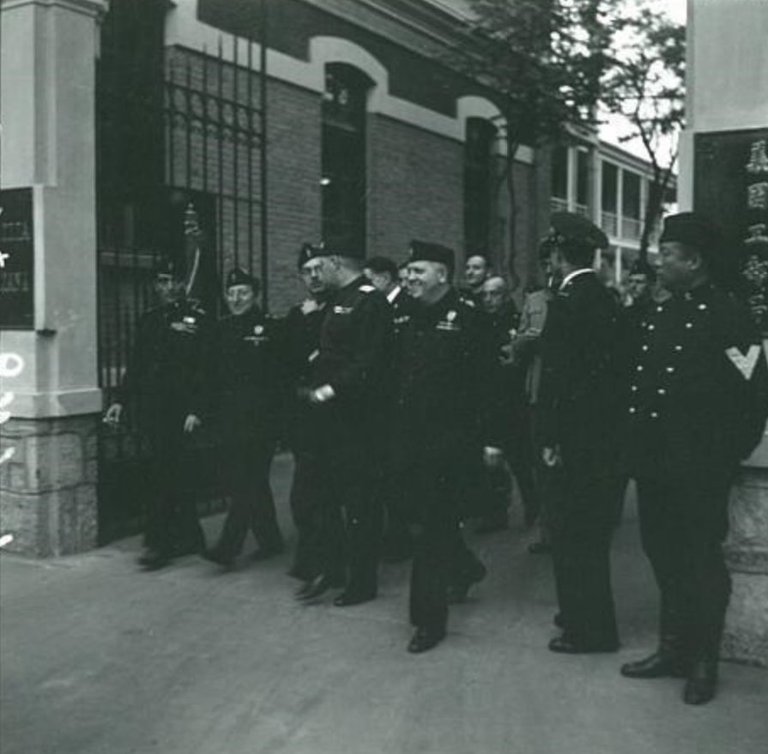
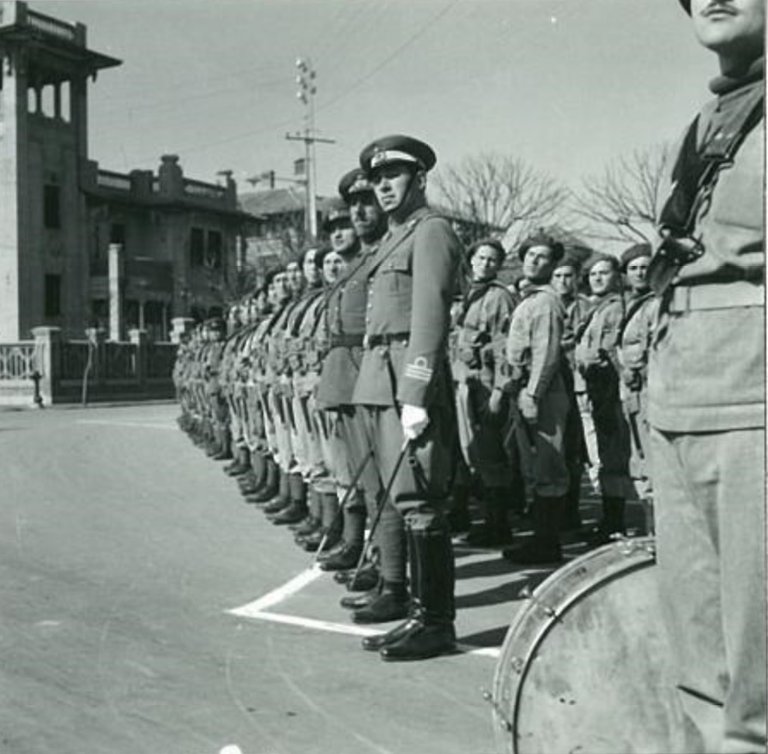
Credits to: Wikipedia, ChinaWW2 | Above is the Piazza Regina Elena in Tientsin.
With blessings from the Third Reich, Japan will now disarm and appropriate these Italian holdings for themselves. Stuck between a rock and a hard place, most of the Italians sought to fight, knowing that it would be a lost cause, as the nearest Allied lines were the British in India, or the Russians beyond the coldness of Manchuria. They know that fighting would either mean death, or a long and arduous life of harsh captivity, or worse, slave labour by the Japanese.
They took their chances anyways. In Beijing, a small garrison of 100 Italian troops gave a stiff resistance to the Japanese, enduring one Banzai charge to the next, and managing to hold out for 24 hours before surrendering. In the Italian sovereignty of Tientsin, a larger assembly of 600 men were more well-equipped, with more provisions to last, artillery, and some Lancia armoured cars. Given that they faced a force of Japanese more than tenfold the strength, including a column of tanks and an entire division behind that, they chose to surrender.
Who Dares Wins.
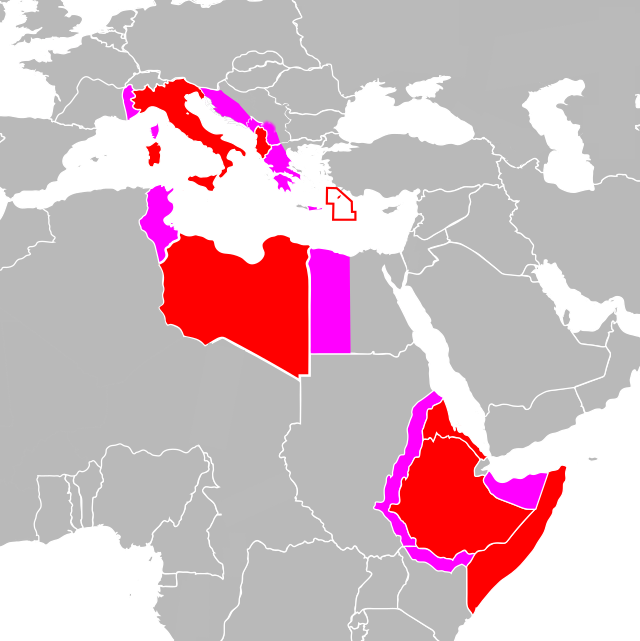
Credits to: Wikiwand - Italian Colonies During WW2 | Pink: Territories annexed during WW2.
A difficult choice, but it certainly helped to save thousands from an otherwise pointless death. Amidst all that chaos however, my attention immediately came to the mention of Lancia, as my ears pricked like a keen dog being called for dinner. Just like other carmakers at the time, Lancia was conscripted to help the war effort. Tanks, trucks, planes, boats, firearms, howitzers, and anything else that's required to keep them in the fight.
This combined effort can be seen today, as car factories have been turned to make medical, and protective equipment in our fight against Covid-19. Alfa Romeo had the glamour of making aircraft parts and engines, as Fiat made main-battle tanks. Lancia however, was more utilitarian, which nevertheless helped serve as a vital artery in mobilising troops. Starting off, we have the most adorably named 'Ro' family of trucks.
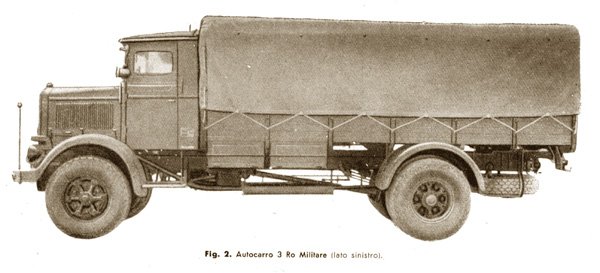

Credits to: Wikipedia - Lancia 3Ro | Hauling shells, or a big gun.
Ro, Ro, Ro your trucks, gently down the (Mediterranean) Sea. Merrily, merrily, merrily, merrily, Fascism's but a dream.
~ A poem, by yours truly.
First designed for civilians in 1933, the Ro had plentiful of refinements and variations until the end of WW2. Generationally, the first one was called Ro, succeeded by Ro-Ro, and the 3Ro. Cutesy, I thought. Nevertheless, the Ro trucks were designed to be robust, reliable, and easy to drive. The earlier two-, and three-cylinder diesels weren't beefy enough for military use, thus creating the five-cylinder 3Ro, and its mighty 92-horsepower.
In its many forms, you could use it to carry a platoon of hardy soldiers, or evacuate the wounded. But more interestingly, you could just tear out the rear-bed, and then install a 90mm cannon on it. An effective gun platform, the 'Cannone da 90/53' wasn't as iconic as the menacing 88mm Flaks, but it was fairly competent at hitting both ground, and air targets. You know how I said, ain't no car can traverse ground better than a Lancia? Well, it looks like it can carry heavy cannons just as well, trekking across Africa with ease.

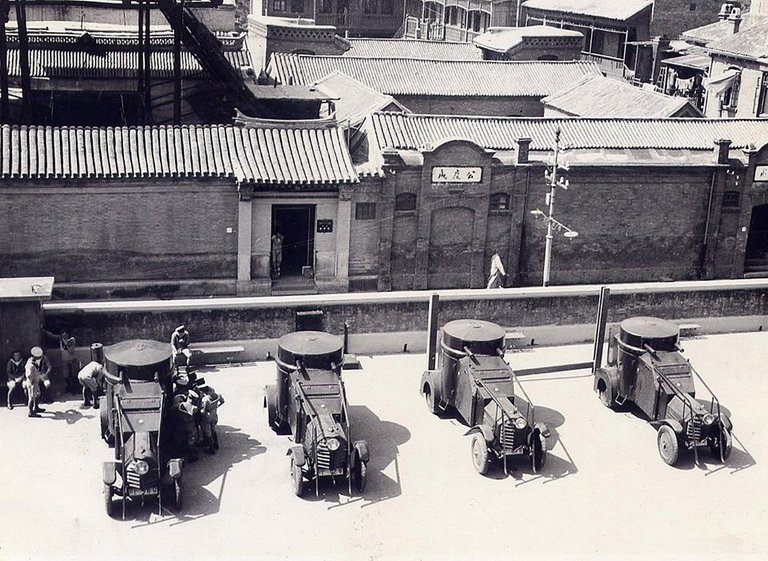
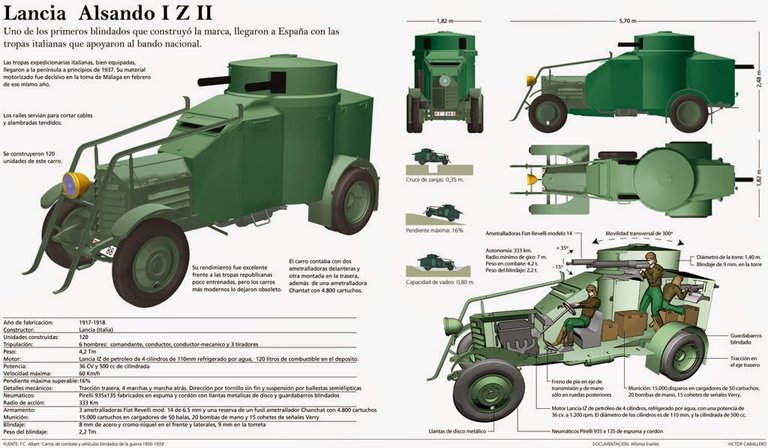
Credits to: Wikipedia - 1ZM, Tanks Encyclopedia, and TheFewGoodMen | The 1ZM, inside and out. Note, those sharp blades on the front are meant to cut through barbed wire.
For a bit more protection, Lancia also made armoured cars. Famously, there was the 1ZM, which never saw its share of action as the rest. First made in 1912, using a truck as its foundation, it continued that Lancia principle of innovation, thus creating one of most advanced piece of machinery in its day. The earlier 1ZMs had twin-mounted 8mm machine-guns, with the option of having a third one mounted above the turret. It had 9mm of armour plating, and it could just about squeeze a crew of six, not including an espresso making station.
When The Great War broke out, Italy's frontier with the German Empire was far too hilly for tanks to be used, though it did at least see some fighting with the Austro-Hungarians in the north-east. It quickly became outdated during the Interwar years, though it could still fight. WW2 saw some 1ZMs being sent very, very far from home. At least four of them were stationed in Tientsin, as the story goes, being placed around the Italian diplomatic compound. However, since that garrison chose to surrender, it's likely those 1ZMs had never fired a single shot.
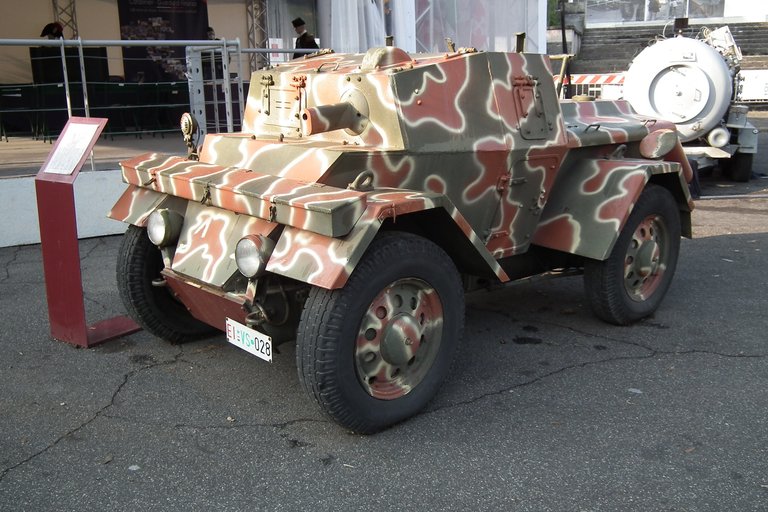
Credits to: Tanks Encyclopedia | The speedy little Lancia 'Lynx'.
Lancia did make another armoured car however, called the 'Lince', or Lynx. Basically, it was a carbon-copy of the British-made Dingo, and the Lince had an even shorter Wikipedia page to extract information from. It was made mainly for patrol and reconnaissance missions, with minimal armouring, and just a single 8mm machine-gun turret. It was at least nimble, drawing from a four-wheel drive, four-wheel steering, independent suspension, and a V8 to power this onto a top-speed of 53mph. Finished too late into the war, the Lince saw even lesser use than the 1ZM.
So, there you have it, a bit of Lancia trivia that you will likely never need in life. It was a bit pointless, not that I think of it - a military lorry, and two armoured vehicles that were barely used. It's hardly the same heroics that we normally praise Lancia for, isn't it? But hey, given how passionate people can be around Lancias, this might prove useful. The next time someone argues between the either the Fulvia, or the Stratos being the prettiest Lancia - just (literally) drop the bomb, and tell them your 3Ro, with its 90mm gun will blow either one out of the water. Tell them about those Lancias that went where no rally car dared to go.

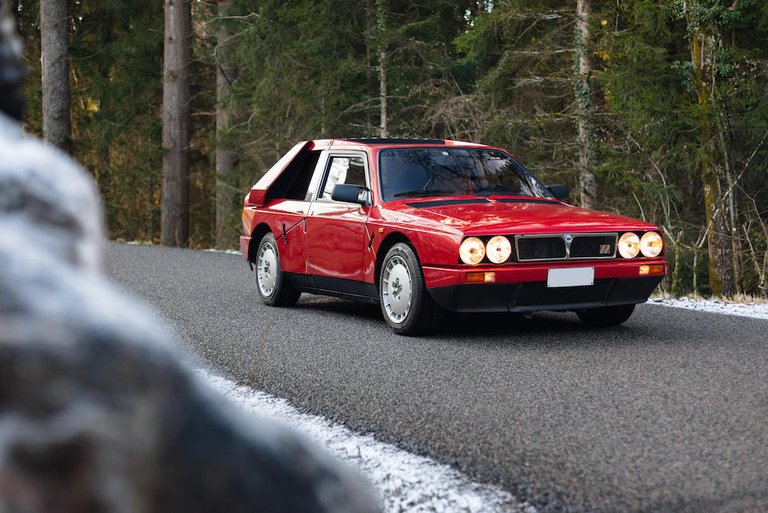

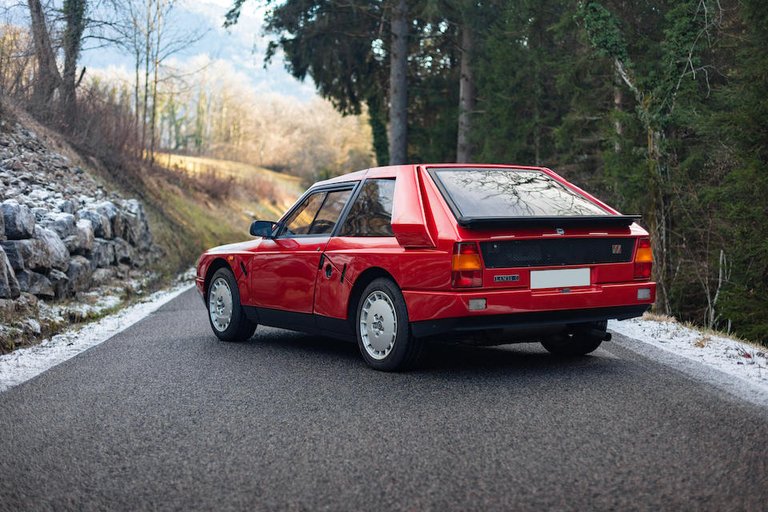
Credits to: The Coolector | Enough with war. Here's a Lancia S4 Stradale, for your troubles.
@tipu curate 2 :)
Upvoted 👌 (Mana: 0/10)
Cheers for the support, @cardboard and @tipu :-D
Here's my Twitter #POSH link :-D